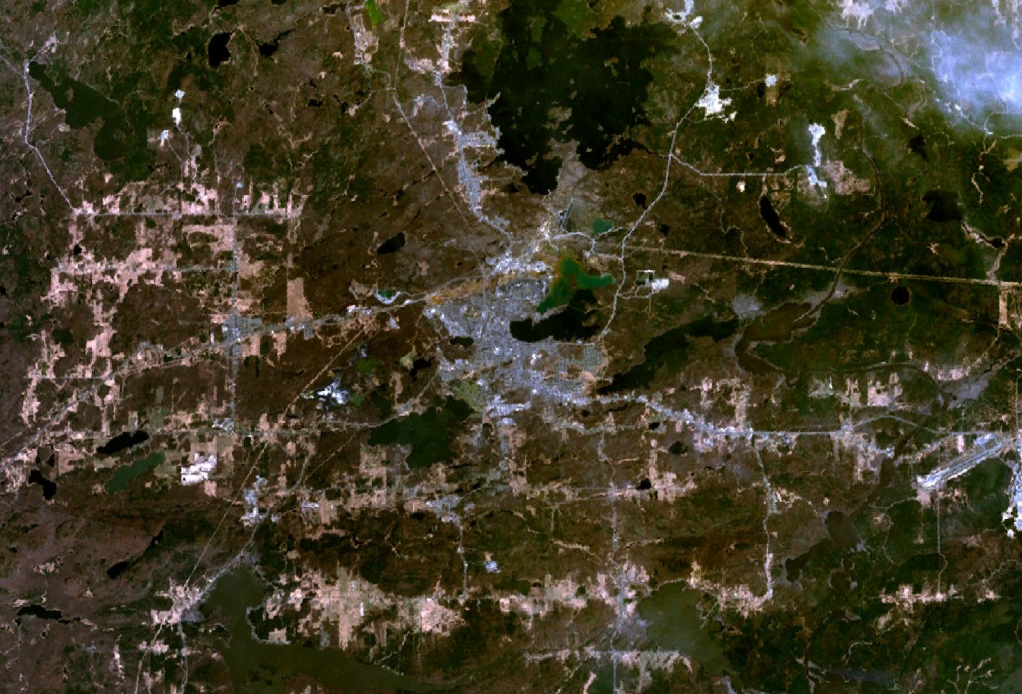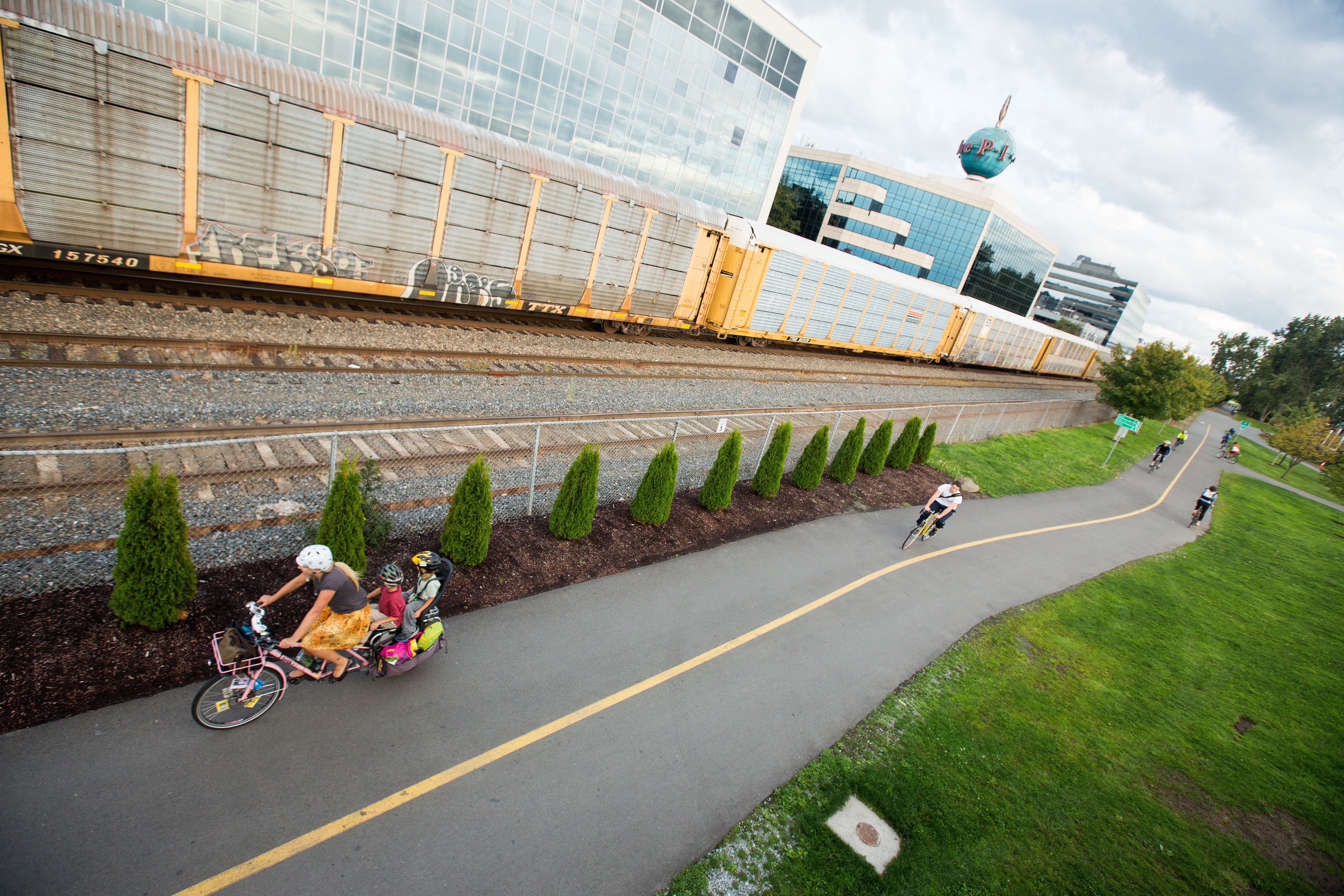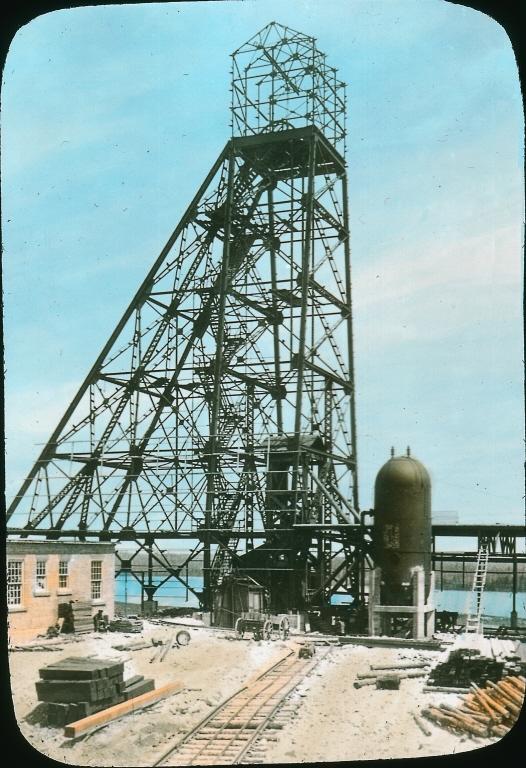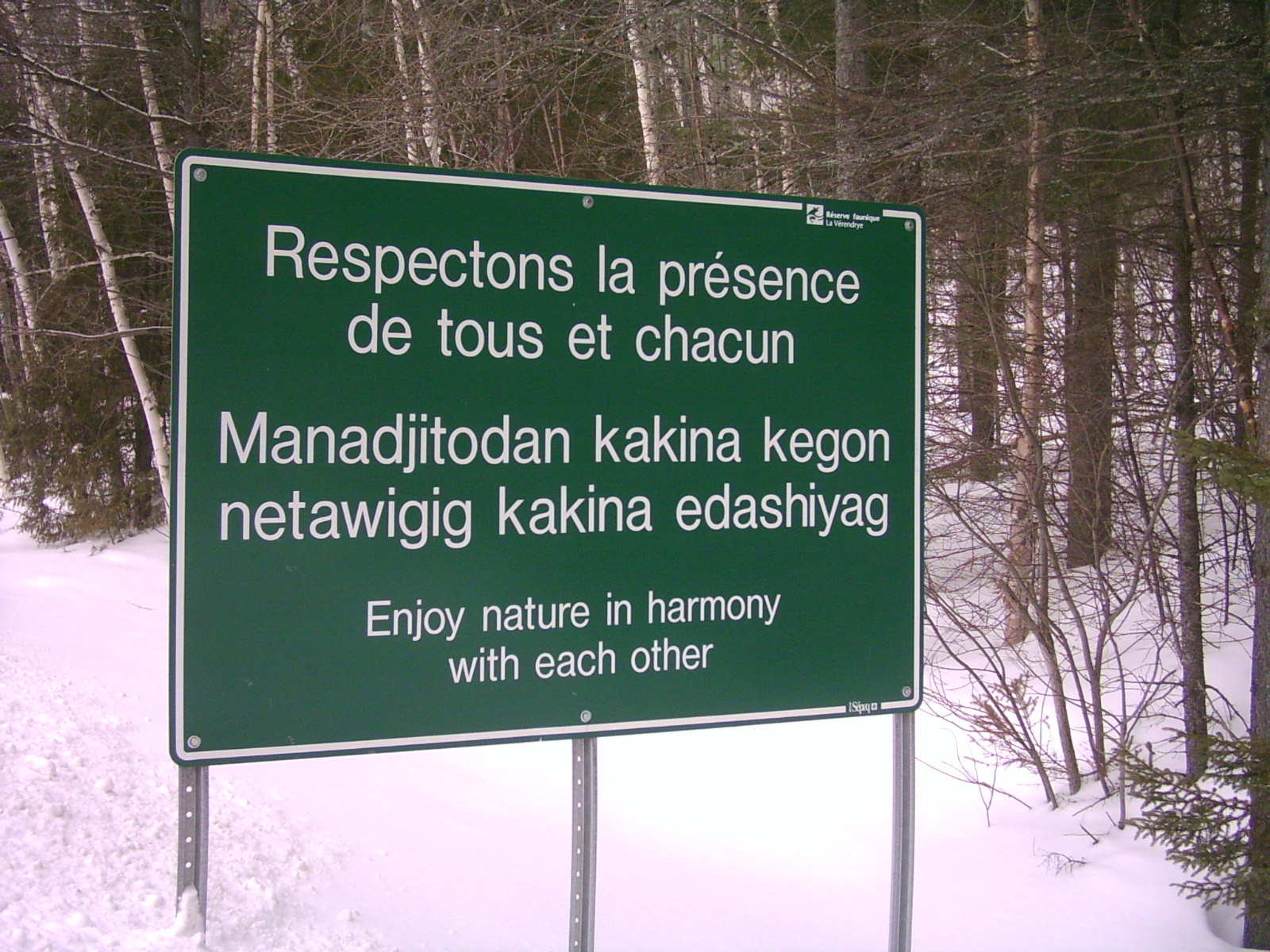|
Osisko Lake
Osisko Lake (officially Lac Osisko) is a lake in Rouyn-Noranda, Quebec, Canada. It is 3 km (2 mi) long, and 3 km wide. The downtown of Rouyn-Noranda is situated on its western shore. The lake is a recreational area, surrounded by trails and a bike path. The city hospital is also located on the lake's shore. Lac Osisko has been a polluted lake for decades, having been contaminated by tailings from Noranda Mines. Etymology ''Osisko'' comes from Algonquin and means "muskrat The muskrat (''Ondatra zibethicus'') is a medium-sized semiaquatic rodent native to North America and an introduced species in parts of Europe, Asia, and South America. The muskrat is found in wetlands over a wide range of climates and habitat ...". References Rouyn-Noranda Lakes of Abitibi-Témiscamingue {{AbitibiTémiscamingue-geo-stub ... [...More Info...] [...Related Items...] OR: [Wikipedia] [Google] [Baidu] |
Rouyn-Noranda
Rouyn-Noranda ( 2021 population 42,313) is a city on Osisko Lake in the Abitibi-Témiscamingue region of Quebec, Canada. The city of Rouyn-Noranda is a coextensive with a territory equivalent to a regional county municipality (TE) and census division (CD) of Quebec of the same name. Their geographical code is 86. History The city of Rouyn (named for Jean-Baptiste Rouyn, a captain in the Régiment Royal Roussillon of Louis-Joseph de Montcalm) appeared after copper was discovered in 1917. Noranda (a contraction of "North Canada") was created later around the Horne mine and foundry. Both were officially constituted as cities in 1926, then merged in 1986. Since 1966, Rouyn and Noranda constitute the capital of the Abitibi-Témiscamingue region. It is also the seat of Université du Québec en Abitibi-Témiscamingue (UQAT) since 1983. The population tends to increase or decrease dramatically depending on the economic situation. The city's population dropped by 5 per cent bet ... [...More Info...] [...Related Items...] OR: [Wikipedia] [Google] [Baidu] |
Quebec
Quebec ( ; )According to the Canadian government, ''Québec'' (with the acute accent) is the official name in Canadian French and ''Quebec'' (without the accent) is the province's official name in Canadian English is one of the thirteen provinces and territories of Canada. It is the largest province by area and the second-largest by population. Much of the population lives in urban areas along the St. Lawrence River, between the most populous city, Montreal, and the provincial capital, Quebec City. Quebec is the home of the Québécois nation. Located in Central Canada, the province shares land borders with Ontario to the west, Newfoundland and Labrador to the northeast, New Brunswick to the southeast, and a coastal border with Nunavut; in the south it borders Maine, New Hampshire, Vermont, and New York in the United States. Between 1534 and 1763, Quebec was called ''Canada'' and was the most developed colony in New France. Following the Seven Years' War, Quebec b ... [...More Info...] [...Related Items...] OR: [Wikipedia] [Google] [Baidu] |
Canada
Canada is a country in North America. Its ten provinces and three territories extend from the Atlantic Ocean to the Pacific Ocean and northward into the Arctic Ocean, covering over , making it the world's second-largest country by total area. Its southern and western border with the United States, stretching , is the world's longest binational land border. Canada's capital is Ottawa, and its three largest metropolitan areas are Toronto, Montreal, and Vancouver. Indigenous peoples have continuously inhabited what is now Canada for thousands of years. Beginning in the 16th century, British and French expeditions explored and later settled along the Atlantic coast. As a consequence of various armed conflicts, France ceded nearly all of its colonies in North America in 1763. In 1867, with the union of three British North American colonies through Confederation, Canada was formed as a federal dominion of four provinces. This began an accretion of provinces an ... [...More Info...] [...Related Items...] OR: [Wikipedia] [Google] [Baidu] |
Trail
A trail, also known as a path or track, is an unpaved lane or small road usually passing through a natural area. In the United Kingdom and the Republic of Ireland, a path or footpath is the preferred term for a pedestrian or hiking trail. The term is also applied in North America to routes along rivers, and sometimes to highways. In the US, the term was historically used for a route into or through wild territory used by explorers and migrants (e.g. the Oregon Trail). In the United States, "trace" is a synonym for trail, as in Natchez Trace. Some trails are dedicated only for walking, cycling, horse riding, snowshoeing or cross-country skiing, but not more than one use; others, as in the case of a bridleway in the UK, are multi-use and can be used by walkers, cyclists and equestrians alike. There are also unpaved trails used by dirt bikes and other off-road vehicles, and in some places, like the Alps, trails are used for moving cattle and other livestock. Usage In Austra ... [...More Info...] [...Related Items...] OR: [Wikipedia] [Google] [Baidu] |
Bike Path
A bike path is a bikeway separated from motorized traffic and dedicated to cycling or shared with pedestrians or other non-motorized users. In the US a bike path sometimes encompasses ''shared use paths'', "multi-use path", or "Class III bikeway" is a paved path that has been designated for use by cyclists outside the right of way of a public road. It may or may not have a center divider or stripe to prevent head-on collisions. In the UK, a ''shared-use footway'' or ''multi-use path'' is for use by both cyclists and pedestrians. Bike paths with independent rights-of-way Bike paths that follow independent rights-of-way are often used to promote recreational cycling. In Northern European countries, cycling tourism represents a significant proportion of overall tourist activity. Extensive interurban bike path networks can be found in countries such as Denmark or the Netherlands, which has had a national system of cycle routes since 1993. These networks may use routes dedicated exc ... [...More Info...] [...Related Items...] OR: [Wikipedia] [Google] [Baidu] |
Hospital
A hospital is a health care institution providing patient treatment with specialized health science and auxiliary healthcare staff and medical equipment. The best-known type of hospital is the general hospital, which typically has an emergency department to treat urgent health problems ranging from fire and accident victims to a sudden illness. A district hospital typically is the major health care facility in its region, with many beds for intensive care and additional beds for patients who need long-term care. Specialized hospitals include trauma centers, rehabilitation hospitals, children's hospitals, seniors' (geriatric) hospitals, and hospitals for dealing with specific medical needs such as psychiatric treatment (see psychiatric hospital) and certain disease categories. Specialized hospitals can help reduce health care costs compared to general hospitals. Hospitals are classified as general, specialty, or government depending on the sources of income received. A teachi ... [...More Info...] [...Related Items...] OR: [Wikipedia] [Google] [Baidu] |
Noranda (mining Company)
Noranda Inc. was a mining and metallurgy company originally from Rouyn-Noranda, Quebec, Canada. It was listed on the TSX under the symbol NRD.LV. After eventually acquiring a large interest in rival mining company Falconbridge, it merged with that company in 2005. The combined company continued under the name Falconbridge Limited, ending the Noranda name. Only one year later in 2006 Falconbridge was acquired by the Swiss-based mining company Xstrata. On 2 May 2013 ownership of Xstrata was fully acquired by mining behemoth Glencore. History and operations Noranda was incorporated in 1922 as Noranda Mines under the leadership of James Y. Murdoch to exploit the Horne deposit, discovered by Edmond Henry Horne on mineral claims he staked in 1920. Extraction of copper began on 17 December 1927. Although extraction was originally predicted to last for only three years, additional reserves (the gigantic "Giant H Orebody") were quickly discovered; the mine would form the backbone of Nor ... [...More Info...] [...Related Items...] OR: [Wikipedia] [Google] [Baidu] |
Algonquin Language
Algonquin (also spelled Algonkin; in Algonquin: or ) is either a distinct Algonquian language closely related to the Ojibwe language or a particularly divergent Ojibwe dialect. It is spoken, alongside French and to some extent English, by the Algonquin First Nations of Quebec and Ontario. As of 2006, there were 2,680 Algonquin speakers,. less than 10% of whom were monolingual. Algonquin is the language for which the entire Algonquian language subgroup is named; the similarity among the names often causes considerable confusion. Like many Native American languages, it is strongly verb-based, with most meaning being incorporated into verbs instead of using separate words for prepositions, tense, etc. Classification Omàmìwininìmowin (Algonquin) is an Algonquian language, of the Algic family of languages, and is descended from Proto-Algonquian. It is considered a particularly divergent dialect of Ojibwe by many. But, although the speakers call themselves '' Omàmìwinin� ... [...More Info...] [...Related Items...] OR: [Wikipedia] [Google] [Baidu] |
Muskrat
The muskrat (''Ondatra zibethicus'') is a medium-sized semiaquatic rodent native to North America and an introduced species in parts of Europe, Asia, and South America. The muskrat is found in wetlands over a wide range of climates and habitats. It has important effects on the ecology of wetlands, and is a resource of food and fur for humans. Adult muskrats weigh , with a body length of . They are covered with short, thick fur of medium to dark brown color. Their long tails, covered with scales rather than hair, are their main means of propulsion. Muskrats spend most of their time in the water and can swim under water for 12 to 17 minutes. They live in families, consisting of a male and female pair and their young. To protect themselves from the cold and from predators, they build nests that are often burrowed into the bank with an underwater entrance. Muskrats feed mostly on cattail and other aquatic vegetation but also eat small animals. ''Ondatra zibethicus'' is the only s ... [...More Info...] [...Related Items...] OR: [Wikipedia] [Google] [Baidu] |


.jpg)




